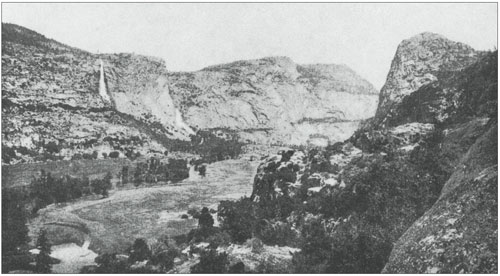
This Article From Issue
January-February 2006
Volume 94, Number 1
Page 78
DOI: 10.1511/2006.57.78
Dam! Water, Power, Politics, and Preservation in Hetch Hetchy and Yosemite National Park. John Warfield Simpson. xxiv + 356 pp. Pantheon, 2005. $28.50.
Deep Water: The Epic Struggle over Dams, Displaced People, and the Environment. Jacques Leslie. xii + 352 pp. Farrar, Straus and Giroux, 2005. $25.
The Future of Large Dams: Dealing with Social, Environmental, Institutional and Political Costs. Thayer Scudder. xviii + 389 pp. Earthscan, 2005. $82.50.
The publication of three new books addressing the problems associated with large dams reflects an ongoing debate over concerns such as development in industrializing nations, social and environmental justice, and the protection of river ecosystems. On the one hand, people who wish to prevent the building of huge dams have become increasingly organized and effective at bringing their message to wider public attention. The protesters range from environmental organizations such as the International Rivers Network, which is active on a variety of proposed dams, to the Save the Narmada Movement, which came into being to oppose a specific dam proposal. On the other hand, as Jacques Leslie notes at the end of Deep Water, in 2003 the World Bank announced a new water-resources policy that advocates just such projects. And ironically enough, industrialized nations, which have already built thousands of big dams, are now expending a vast amount of money and energy trying to determine how to reduce their negative effects. Presumably today's industrializing nations will have to work equally hard in the future to reverse the problems brought on by the current phase of dam construction.

From Dam!
Those opposed to large dams can marshal a sobering array of criticisms based on those already built, which have provided some benefits but have without exception destroyed river environments and the human communities that depend on them. In Dam!, John Warfield Simpson presents a thorough case study of one such project, which flooded Yosemite's Hetch Hetchy Valley early in the 20th century. The story of the Hetch Hetchy Dam, whose construction was one of the first major defeats of the nascent American environmental movement, has been told in many other books, but not in such detail. Simpson skillfully creates a context for the heated debate that occurred before this dam was built, outlining the emerging national environmental movement as well as the development of San Francisco and its water politics. He evokes time, place and personalities such as John Muir, Theodore Roosevelt and Gifford Pinchot, creating a highly readable account.
In the second half of the book, Simpson discusses current debates over removing the dam. These focus both on environmental issues and on the wisdom of depending on public versus private suppliers for electric power. He argues that perceptions have played a large role historically in the debate over Hetch Hetchy. For example, development and recreational use in Yosemite made it easier to accept the plan to flood a portion of a national park that was already compromised by a long history of land use. After carefully reviewing arguments for retaining the dam and ones for getting rid of it, Simpson concludes that Hetch Hetchy should never have been built and provides a forceful endorsement for removing it.
Both Thayer Scudder's The Future of Large Dams and Jacques Leslie's Deep Water provide further examples of ill-conceived hydroelectric and water-management projects that have created more damage than benefits. Scudder, an anthropologist who is one of the world's foremost experts on resettlement of people displaced by dams, brings a lifetime of personal experience and specific examples to his book. Despite the inclusion of the word "environmental" in the subtitle, the volume addresses primarily social and political concerns.
Writing in a more scholarly tone than Simpson or Leslie, Scudder draws on his experience to synthesize general principles such as the stages of response among resettled peoples (planning and recruitment, adjustment and coping, community formation and economic development, handing over and incorporation). He also provides several case studies, concluding that under certain circumstances large dams remain a reasonable development strategy. Specifically, Scudder argues that they are justified under two sets of conditions: first, "where export of hydropower is seen as the best option for providing small late-industrializing countries such as Laos and Nepal with the foreign exchange that is necessary for raising the incomes of their very poor majority"; and second, "where an increasing disconnect between a nation's growing population and its life supporting natural resource base requires major dam construction to meet immediate and near-future needs for water . . . and for food."
These statements are hard to accept, given the following observations, which Scudder makes two pages earlier:
As global population and consumption continue to increase so too does the disconnect between people and their environmental life support systems. . . . [I]n the longer run, most [large dams] will worsen environmental conditions still further. In other cases, as with Laos' NT2 Dam, the dam option makes sense not because it is a good option, but only because it is the best option available for gaining the necessary foreign exchange for poverty alleviation.
There is evidence that even in the best scenarios, large dams tend to encourage population growth and resource extraction in areas that are marginal for human settlement and thus in the long run only exacerbate existing problems and create new ones. Thus I found it difficult to accept Scudder's assertion that large dams are sometimes a promising and even necessary tool for development.
My skepticism was strengthened by Leslie's examination in Deep Water of three case studies, from India, Australia and South Africa. In each he follows an individual who is deeply involved in the dam being discussed. Indian activist Medha Patkar repeatedly risks her life to protest the Sardar Sarovar Dam on the Narmada River. Australian Don Blackmore, chief executive of the Murray-Darling Basin Commission, leads Leslie through the lengthy and complicated attempts to restore ecosystem functions lost along the Murray River as a result of multiple dams and more than a century of land-use changes. And it is none other than Thayer Scudder who introduces Leslie to some of the people who have been or will be displaced by dams in southern Africa, and to the vibrant Okavango Delta, where Scudder and others helped to prevent a proposed dam from being built. Like Simpson's book, Deep Water is a highly readable account focused largely on people. The discussion of the Murray River is the only material in it that provides any detail on the river ecosystem and regional environmental history.
Of the three books, The Future of Large Dams most resembles a reference work, one aimed at specialists or those wishing to extract numbers and generalizations across many case studies. Its price tag is also likely to deter the casual reader. Dam! and Deep Water are books that anyone interested in environmental history or the issues surrounding large dams can sit down and read for pleasure. Both contain plenty of reference material, too, but Deep Water is marred by the lack of an index.
None of the books contains detailed descriptions of the river environments affected by dams. Rather, the authors assume that readers know that dams alter the ecosystems of rivers. But the details of how they do so go unexplained. This omission may be appropriate. Simpson observes that in the Hetch Hetchy Valley politics ultimately trumped environmental concerns (as well as economic, engineering and philosophical ones), and it appears to play a similarly influential role in most decisions about large dams. The lack of material on ecosystem alteration is nonetheless disappointing—especially in light of Leslie's concluding statement that large dams will someday "be reminders of an ancient time when humans believed they could vanquish nature, and found themselves vanquished instead." This remark leaves the reader with the vaguely comforting idea that someday we will realize that we made serious mistakes in building large dams, but it does not acknowledge the irreparable losses in species and ecosystems that will occur before we attain such collective wisdom. That caveat aside, all three of these books provide discussions and insights valuable to anyone concerned with the future of our planet.

American Scientist Comments and Discussion
To discuss our articles or comment on them, please share them and tag American Scientist on social media platforms. Here are links to our profiles on Twitter, Facebook, and LinkedIn.
If we re-share your post, we will moderate comments/discussion following our comments policy.